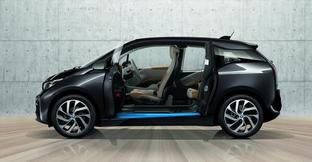
"I…learned how hard it is for any organization to innovate away from its core competence. There were all sorts of forces that constantly brought BP back to its core purpose of extracting fossil energy as efficiently and responsibly as it can."
This quote really struck a chord with me. If we look further at BP as an example, their inability to change is really no different to, say, Kodak (who invented the digital camera!) or Blockbuster (whose CEO declared that Netflix wasn't on its “competitive radar” as late as 2008) both of which have now gone bankrupt in the face of digital competition. It is fundamentally about an inability to innovate the business model. For ‘digital’ you can easily read ‘renewables’ in BP’s case.
So why do so many established companies find it so difficult to evolve? Looking at Kodak’s inability to adapt as an example, we can see many of the issues that are often at play. For example, one of the big problems was that it made 80% gross margins on photo film. As a result, every innovation project, especially the digital ones, had far too high a hurdle to overcome to be taken forward. Kodak had invested a lot in this ‘Razor and Blades’ model and this led to the board’s blinkers and unwillingness to cannibalise their core business. It is not that they didn’t see the digital revolution coming – they just couldn't make it work within their culture and corporate world-view.
I would suggest that some, if not all of the following things were therefore at play at Kodak:
- (lack of) senior management buy-in to its innovation programme
- short-term targets driven by shareholder demands and staff compensation structures
- an unwillingness or inability to challenge company / industry assumptions
- an unwillingness to cannibalise existing markets
- asset and capabilities / skills gaps
- cultural barriers
- not understanding the customer need well enough
- lack of foresight and plausible future scenarios
Managers would do well to be aware of the list above and make them a central part of innovation focus, decision making and wider strategic planning. Some of them, such as short term focus, are fundamental to the whole strategy and need to be addressed head on, taking all stakeholders, including shareholders, on a journey to longer term returns – Paul Polman is setting a great example at Unilever in how to do this.
Changing the culture and willingness to challenge the status quo won’t happen over-night. But it needs to be a priority for senior managers to address these barriers head on. There is a ‘green’ and circular economy revolution happening in every industry and those that don’t, or worse, are unable to embrace it because of some of the straitjackets listed here, might just be the next case study of a business that failed to evolve its business model.
by Jesper Ekelund
|
|
|



 RSS Feed
RSS Feed